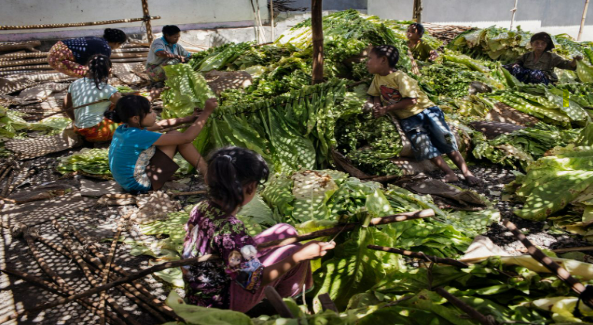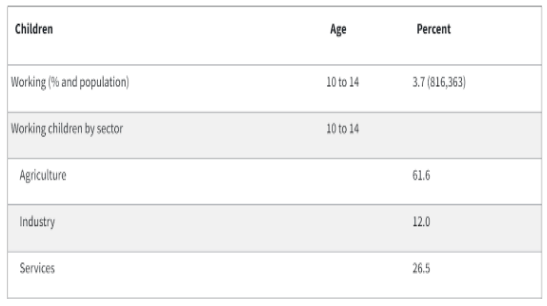CHILD LABOR IN INDONESIA
 https://edition.cnn.com/2016/05/25/asia/indonesia-tobacco-children-hrw/index.html
https://edition.cnn.com/2016/05/25/asia/indonesia-tobacco-children-hrw/index.html
What is child labor? All activities referring to children’s employment that deprives children of their childhood, the opportunity to get an education, and that are harmful to their physical and mental development is the concise yet precise way to define child labor. Child labor comes in many worst forms, for instance, slavery, child trafficking, debt bondage, sexual exploitation, and serfdom. Started centuries ago in many different countries and reached its worst numbers during the Industrial Revolution, child labor has been one of many untackled issues up to this day in many parts of the world, including Indonesia.
In 2019, the amount of child labor in Indonesia reached 0.85 million and within a year, the number increased by 0.32 million, resulting in 1.17 million Indonesian child labor in 2020. The situation became slightly better in 2021 when Indonesia made a moderate advancement in diminishing child labor, proven by a decreasing number of child laborers in Indonesia by up to 0.94 million. As an agrarian country, it is not a surprise that most Indonesian child laborers at the age of 10-14 years old work in the agriculture sector (61.6%), followed by services (26.5%) and industry sectors (12%). The data above becomes evidence that Indonesian children still experience this hazardous and destructive practice.
 https://www.statista.com/statistics/1251512/indonesia-total-child-workers/
https://www.statista.com/statistics/1251512/indonesia-total-child-workers/
 https://www.dol.gov/agencies/ilab/resources/reports/child-labor/indonesia
https://www.dol.gov/agencies/ilab/resources/reports/child-labor/indonesia
Similar to many other concerns, child labor in Indonesia is also caused by several reasons, but there are two major reasons which are linked to one another. First, is poverty; sometimes, it is intergenerational poverty. When parents in a household can no longer fulfill the whole family’s basic and daily needs, child labor is one of many solutions. However, child labor also causes a delay in economic development which later results in a lack of economic growth. Child workers can be paid lower wages then which leads to higher demand for child labor. The consequence of this lack of economic growth goes back to the rise of Indonesian child labor. This phenomenon ends up as a never-ending poverty-child labor cycle. The second reason is the lack of access to education which is related to poverty and child labor. Poverty, education, and child labor become one infinite cycle. Children coming from low-income households may struggle to afford education and with no proper education, it will be hard for them to find decent and well-paid jobs to get out of poverty. On the other hand, since child labor still exists to this day, children are unable to attend school even though education is one of many solutions to eradicate child labor. This is why low school attendance is very related to child labor. The existence of child labor affects the children’s physical and mental well-being and development. The effects vary and cause long-term health issues as a consequence of torture, malnutrition, injuries, extenuation, or exposure to chemicals. For instance, children who work in the agriculture sector are often exposed to toxic fertilizers and pesticides, as well as heavy and dangerous tools or blades.
Children are supposed to enjoy their childhood with their friends, go to school, and make a lot of good memories, instead of entering the workforce at such young ages. The government needs to strengthen and enhance the laws and regulations to protect children from child labor. The goal to exterminate child labor will be very helpful to increase children’s welfare.
References:
- https://www.ilo.org/moscow/areas-of-work/child-labour/WCMS_249004/lang–en/index.htm
- https://www.ilo.org/ipec/Campaignandadvocacy/Youthinaction/C182-Youth-orientated/worstforms/lang–en/index.htm
- https://theowp.org/reports/child-labour-economic-development-and-the-intergenerational-poverty-persistence-cycle/
- https://www.humanium.org/en/child-labour/

